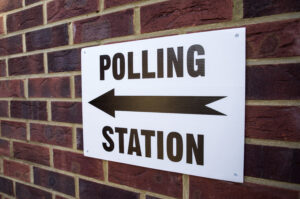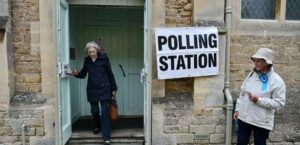With local government elections taking place across England and Wales today, all eyes will be on Westminster to see what impact this final electoral test is likely to have on the Conservative Government, and whether it will shed some light on the question every public affairs professional is being asked daily – when will the general election be?
At JBP, we believe that the general election will be in either October or June, with the date dependent on whether the local elections go well for the Conservatives, poorly, or fall somewhere in between.
Possible Outcome One – The Conservatives hold on to almost all of their council seats
Expected Election Date: October
The Conservative Party is defending 989 council seats and currently holds 18 councils, yet internal media spinners have been briefing that they are expecting to lose many of them due to the ‘vaccine bump’ in the 2021 local elections. With this expectation in mind, should the Conservatives hold on to more council seats than they are expecting to, they will take this as a clear signal that the polls are wrong and that their latest political strategy is bearing fruit. For context, this would have to include holding on to both the Tees Valley and West Midlands Mayoralty, as well as winning the new York and North Yorkshire and East Midlands Mayoralties. They would also have to limit their seat losses to around 100.
Receiving such a signal, the Conservatives are likely to agree that their best chance of success is to continue their current messaging campaign against the Labour Party. They will use Labour’s poorer than expected local election result as proof that the country isn’t ready for a Labour Government, and that Labour’s mismanagement of multiple local authorities is clear evidence that they cannot be trusted to lead the country.
The Conservative Party will likely want to use the summer to make the most of this campaign strategy, resulting in an election in October 2024.
Possible Outcome Two – The Conservatives lose half or more of their seats
Expected Election Date: October
Since March this year, newspapers and politicos have been predicting that the Conservatives will lose half (around 500) of their council seats in today’s election. A prediction so widely accepted that it has been a key expectation-setting line from internal Conservative media briefers. Should the Conservative Party meet this expectation, or lose even more seats than expected such as the Tees Valley and West Midlands Mayoralties, we can expect that the general election will be in October of this year.
This loss will be a clear electoral sign to Sunak’s government that that their time power is drawing to a close and the chance of making any further electoral gains over the summer is almost zero. As such, Rishi Sunak and the Cabinet will turn their attention from campaign preparedness to laying as many traps as possible for an incoming Labour Government while trying to minimise the number of seats that they are expected to lose (including Jeremy Hunt’s). This would include holding a fiscal statement after the party conferences with further cuts in National Insurance, the passage of Rishi’s legacy-building Tobacco and Vapes Bill, and a flight of planes heading to Rwanda.
Possible Outcome Three – The Conservatives do better than expected, but still lose a significant number of seats
Expected Election Date: June
If the Conservatives only lose between 100 – 300 seats and hold on to the Tees Valley and West Midlands combined authorities, it is highly probable that they will decide to call a late June general election. With such an outcome, the Conservatives will see that they are on a path to lose a large number of seats in Parliament, but not so much as to face an electoral wipeout. As such, they would be better to act quickly and call an election that they have a small chance of winning, rather than waiting for public opinion to deteriorate further against the Conservative Party.
In such an outcome, we could expect to see an election called early next week to enter the pre-election period as soon as possible. The following election campaign would begin immediately with the Conservatives running a ‘don’t risk it’ style campaign and attempting to capitalise on the public uncertainty about a Labour government that was reflected in the local election results. As the pre-election period usually runs for five weeks, this would place the election in June of this year.
Secret Option Four – Change in Conservative Party leader
Expected Election Date: September
The secret option, however, is that the leader of the Conservative Party is changed following the local elections. If the local elections are significantly worse than expected, many MPs will feel that they have nothing to lose in changing the Party leadership and removing Rishi Sunak as a result. A new leader of the Party would be appointed quickly and we expect that the new Prime Minister will have no option but to run a 100-day ‘back me or sack me’ style campaign.
Should this take place, the new Prime Minister will coin a very simple slogan, focusing on three policies designed to entice voters, and spend the first 100 days of their premiership laying out their vision for the future, effectively expanding the traditional election campaign significantly. At the end of this 100 days, they will likely then call a general election asking for themselves to be judged on those 100 days and nothing more.
While such an approach is highly unlikely to prevent a future Labour Government, it may enable the Conservative Party to lose significantly fewer seats or at minimum move the political conversation on from their local election results. Stranger things have happened in politics.
If you want to hear more about what we can expect to see from the upcoming general election, or would like to have a chat about how the next government could impact your business, please get in touch and we would be happy to have a short conversation.


